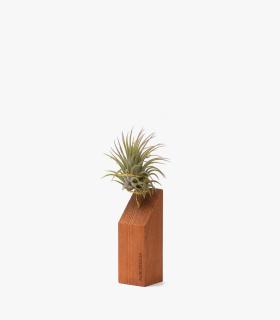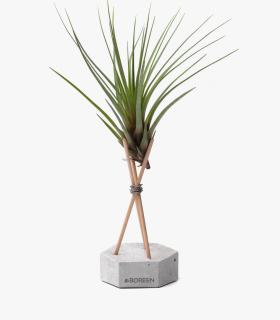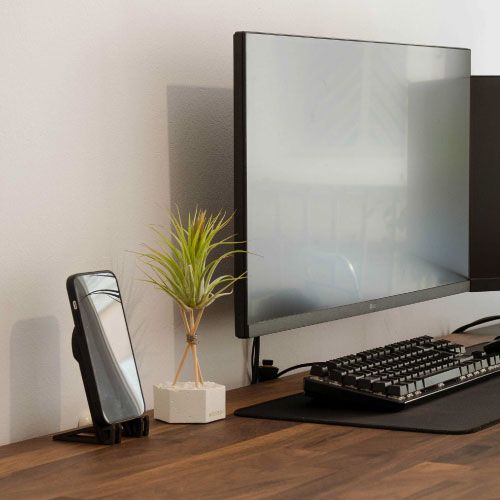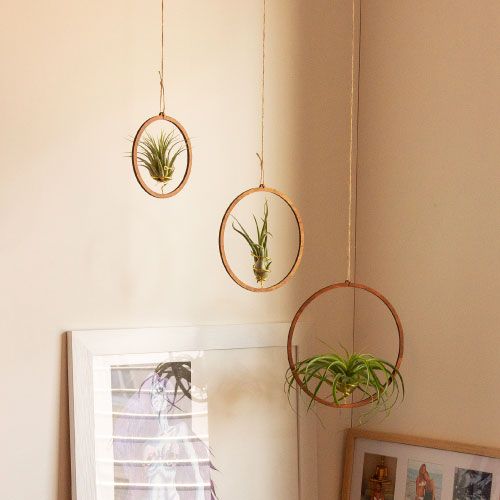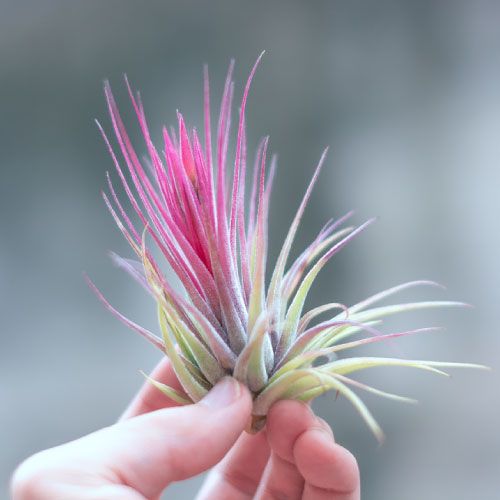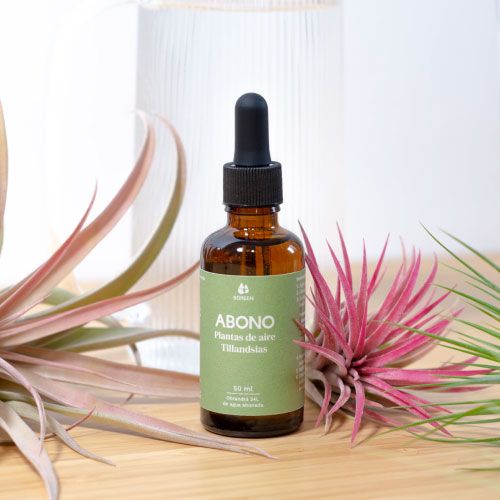How to take care of air plants?
Do you want to know how to take care of air plants? Below we explain the basic tips necessary to take care of your air plant. Do not worry, tillandsias are very easy to care for and maintain so if you are a fan of these beautiful seedlings, you should not fear that it will die or spoil even though you do not have a good hand for the plants. 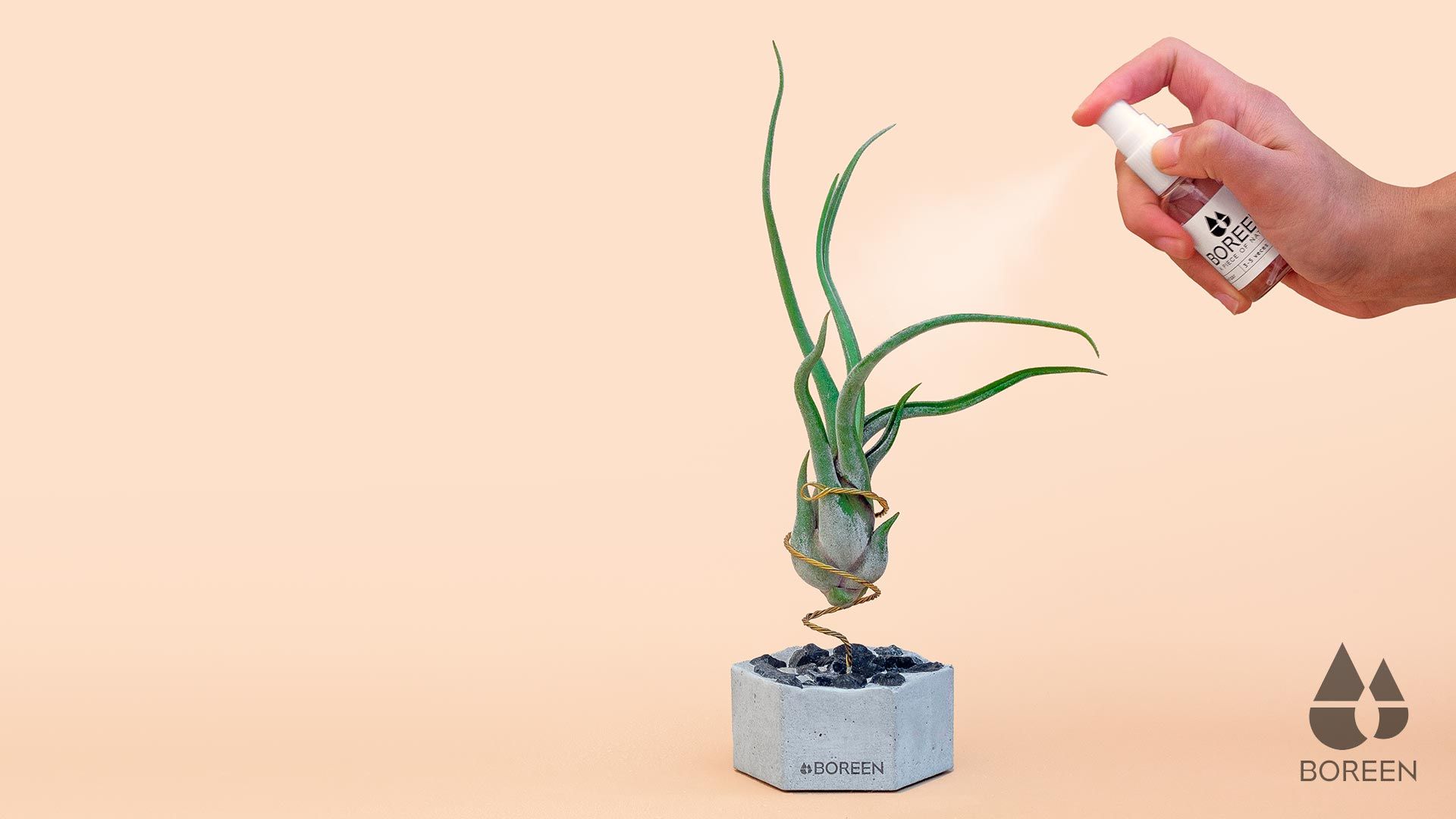
It should be understood that the best way to take care of air plants is by simulating the conditions in which they are in nature. They are plants that absorb all the nutrients they need to live through their leaves. They do this thanks to the so-called trichomes of their leaves. For this reason, they only need light, air and moisture.
How much light do air plants need?
The fact is that they are air plants that live in tropical climates. If we want to have them in Europe, it is more practical to have them indoors. In this way, we can control the temperature to which they are exposed and other factors that will help us take care of the air plants. In addition, they are very practical as plants for office, since their characteristics and care are ideal. So let's start with the different factors to control. They are plants that love indirect light. If you have them indoors and you don't have an area with a lot of ambient light, don't worry. They live perfectly with artificial light inside the house or in the office. On the other hand, if they are in an area where there is a lot of direct light for several hours, you should be careful. Keep in mind that air plants have very low water content. For this reason, if they are exposed to the sun, you should spray them to prevent them from drying out.
Note: The more trichomes (white dots) the more it will withstand sun exposure while on the contrary, the fewer trichomes they have, the less they will withstand direct sun.
How to moisturize or water air plants?
There are several methods with which you can hydrate our air plant. Here's how to do it:
One of the ways to take care of the air plants is to spray it and do it often, always avoiding that the plant is too soaked. If you live in a very humid area it may not be necessary to spray them. He thinks that water spraying is the most ideal method, since it aims to imitate dew. This dew provides the necessary amount of water to our plant. In no case does it leave excess water inside. This could affect you negatively.
Another equally valid way to take care of your tillandsia is to immerse it in water once or twice a week. This process should take about 30 minutes. By doing this, we allow it to hydrate well. This method is especially useful in very dry environments. And if you are in a very dry place you would have to spray it every day. Both forms of irrigation can be combined as you do well. If you see that you will be several days without being able to water it, try to leave it outdoors. Leave it in a shaded area where direct sun does not give it for several hours.
When we submerge or spray excessively our tillandsia we will put it looking down on a dry cloth to drain the excess water. After a few minutes we will place it again on the stand and ready. The important thing is to avoid that accumulated water remains inside the plant. If this were to happen, the core could rot. Therefore, it is important to let it dry upside down and preferably well ventilated. Always think that they are plants that live with very little humidity. It is better that they lack water than that they do not have it in excess.
Note: If your tillandsia is blooming, it will be better not to submerge it. In that case, it is best to spray it, since the flowers are very delicate and will not do well to be soaked.
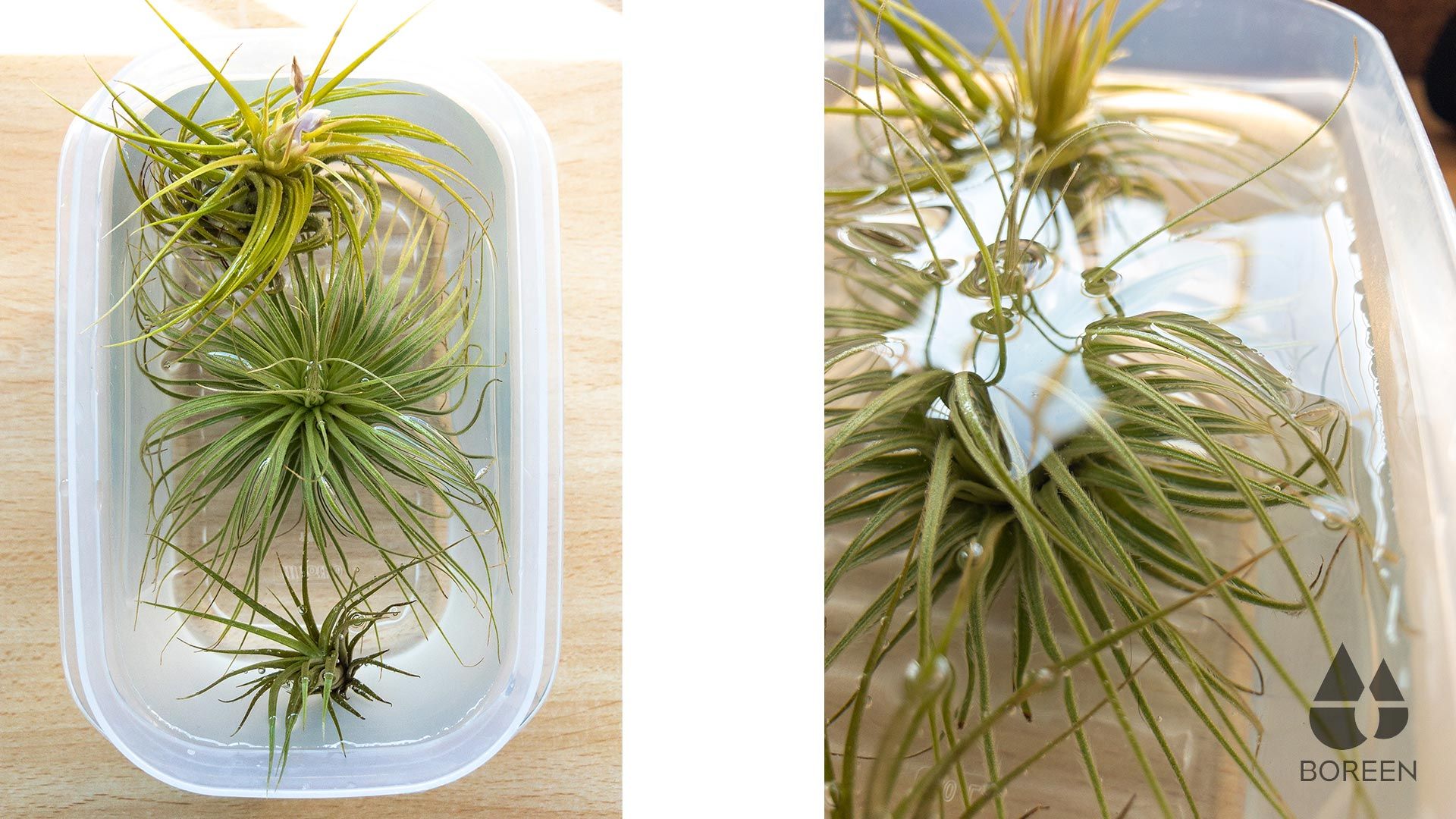
How do I know if I'm overwatering my air plant?
If you are watering your tillandsis or air plant too often you will notice that the core of your plant becomes soft and dark. It's time to stop. You must be careful, if this happens you may not be able to recover your tillandsia. This is because it is rotting. It is very likely that it will stay wet in one of its bathrooms or that you are spraying it too often. Try to leave it well drained in the next baths and make sure that its core does not contain any droplets.
How do I know if my air plant is short of water?
If your aerial plant is lacking in water, you will be able to appreciate it with relative ease. Like all plants they suffer in their leaves with the lack of moisture. You will notice that the tips of the leaves begin to dry progressively. In this case immerse it in water for 30 minutes and then let it release all the excess water letting it drain for a while.
Another way to know this is when the leaves begin to curl inward and wrinkle. It's time to bathe her and allow her to rehydrate.
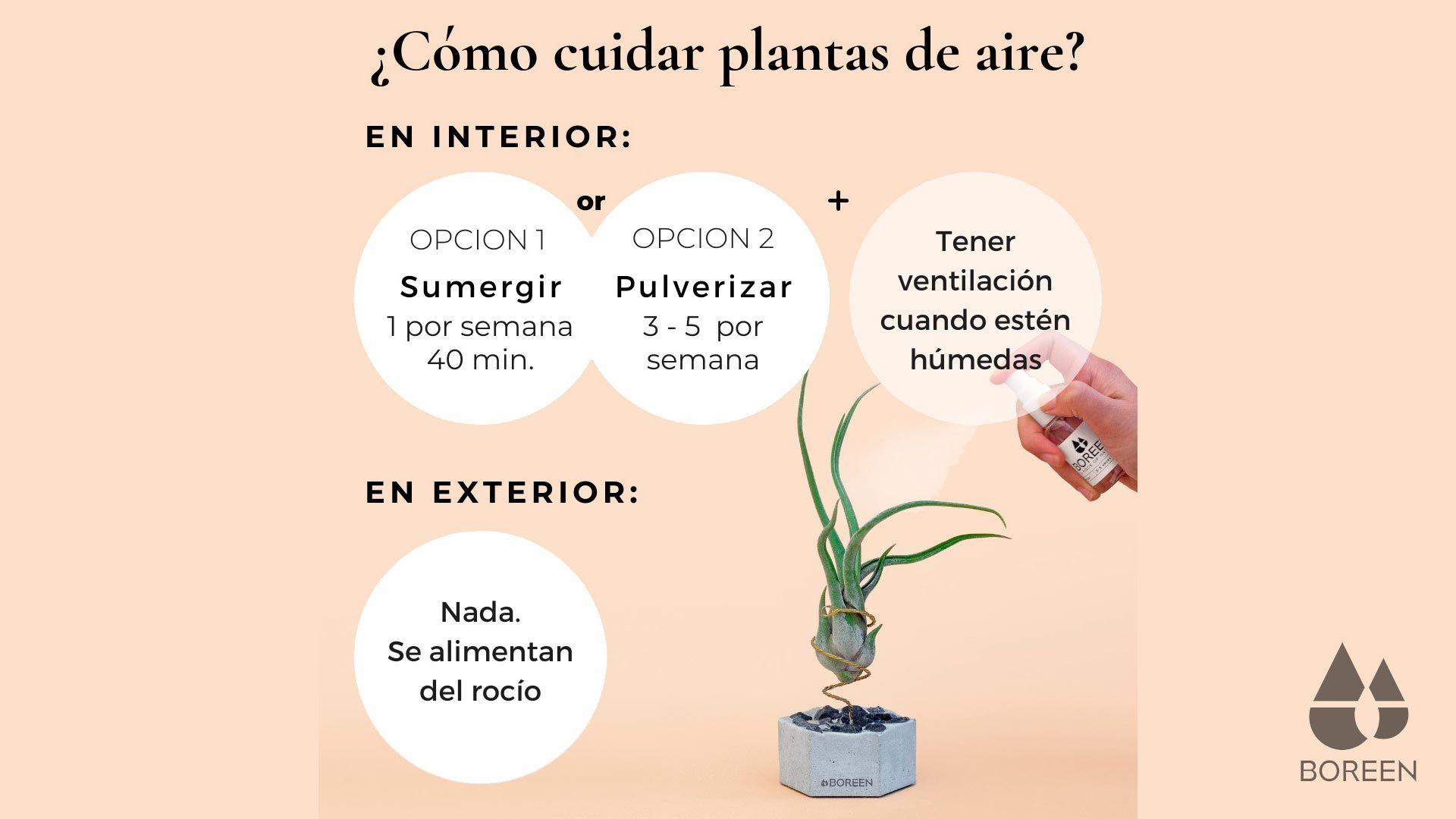
What is the ideal temperature of the air plants?
In Spain we have a warm or temperate climate and you can have your tillandsia outside almost all year round, always taking into account various things:
- Watch that the midday-afternoon sun does not give you in very hot weather. The air plants need to be protected, to be able to be indoors, especially in case of severe weather. If the weather is extremely dry, you will have to water it from time to time to provide that minimum humidity they need to live.
- In winter, especially if you live in a place that lowers the temperature a lot, it will be preferable to move it indoors, so that it does not freeze. And if the temperature does not reach below 0ºC, you simply have to reduce the amount of water that is provided. It is true that air plants are plants that withstand very wide temperature ranges, even so, the temperature at which air plants develop best is from 18ºC to 32ºC. In that range is where your air plants will be most comfortable. We usually say that, where you are comfortable, they will be!
How are air plants paid?
The air plants tillandsias do not need fertilizer for their growth and development. If you have at home one of these exotic plants without root, the first thing you should know is that there is no specific need to fertilize them to keep them healthy although of course fertilizing them periodically will provide nutrients to the plant that will help it grow.
If you are one of the people who are interested in gardening and enjoy dedicating time and pampering to your seedlings, we give you some indications so that you get it right when acquiring the right fertilizer.
- You must bear in mind that there are 3 types of fertilizers. Each of them has a specific composition that is related to the moment of development of the plant.
- If you want to periodically fertilize the air plant, choose a liquid fertilizer that contains the same proportions of nutrients. That is, the same proportion of nitrogen, phosphorus and potassium.
- If you want to help the growth of your air plant, use a liquid fertilizer that contains more nitrogen than the rest of the components.
- If you are looking for a fertilizer designed for the time of flowering of tillandsia, you should choose a fertilizer that contains more phosphorus and potassium and less nitrogen.
Did you like this article? Would you like us to add more information on this or other topics? Leave us below your comment, suggestion or doubt. We will be happy to hear from you and answer all your questions.





